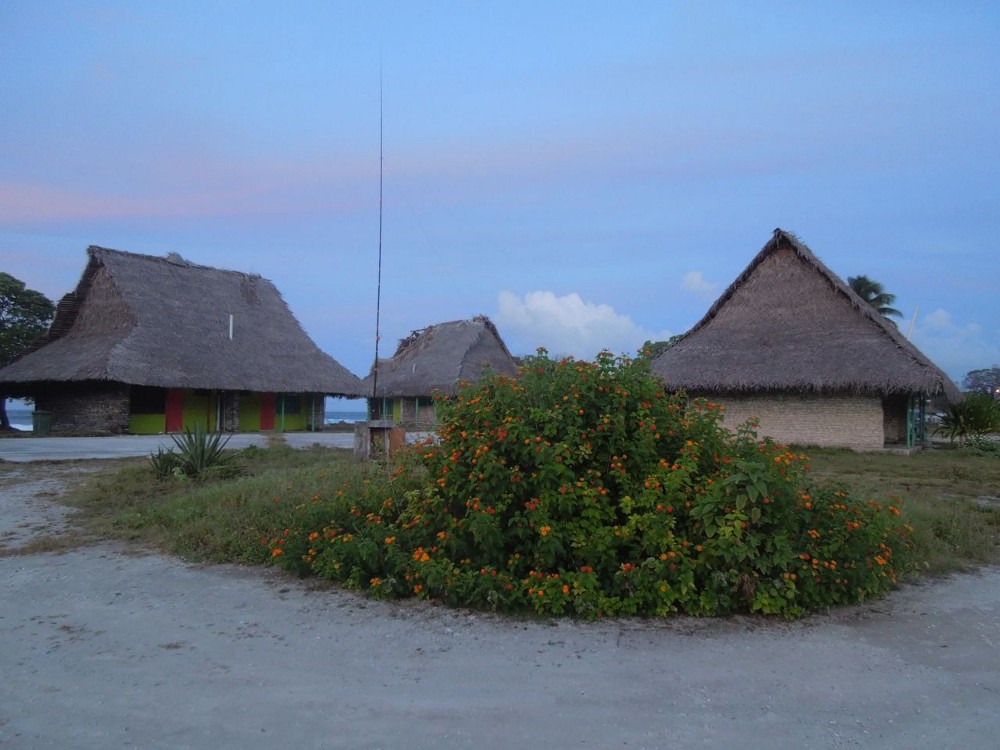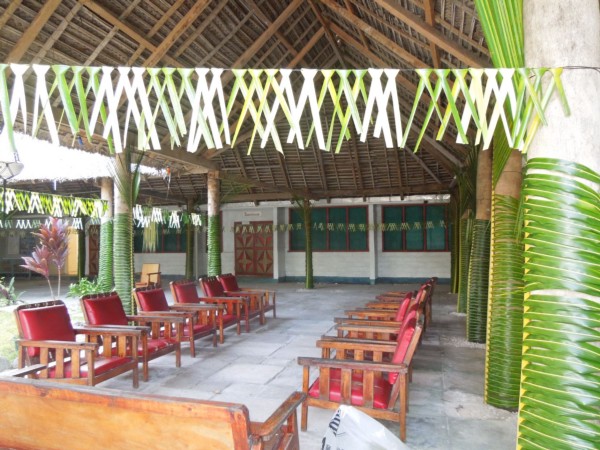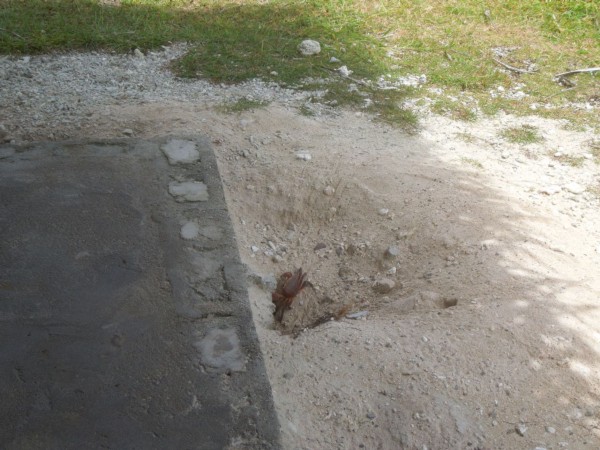Delighted to be here…Tuesday, 8 March 2016 (LINT, Line Islands Time)by Leslie Hartten (CIRES)
 Lantana, which I buy at the Flower Bin each spring and plant in a pot, has here been planted and grown into shrubs taller than I am.
Lantana, which I buy at the Flower Bin each spring and plant in a pot, has here been planted and grown into shrubs taller than I am.
Delighted to be here…
Tuesday, 8 March 2016 (LINT, Line Islands Time)by Leslie Hartten (CIRES)
KIRITIMATI ISLAND, Kiribati — Tomorrow will mark two weeks since I arrived at Kiritimati Island. I thought I’d be blogging regularly once I arrived, but until today I didn’t know what to write.
My first week felt both very long and very short. Two days of travel were followed by the lovely welcoming ceremony Captain Cook Hotel (CCH) hosts for new guests. It is done with love and pride, but it makes for a very late and long dinner. A few hours of sleep, then up at 12:30am for my first-ever balloon launch. I helped Paul fill the balloon, launch it, and pick up, then left him to do the rest and went back to sleep.
 The common area at the main hotel building, decorated with local palm leaves before the Farewell Dinner.
The common area at the main hotel building, decorated with local palm leaves before the Farewell Dinner.
Up at 7:30am to shower and eat, and my learning really began: where to get meals and internet access at CCH; how to boil the water they leave on our porch without blowing the fuse; introductions to CCH staff and some longterm island residents; where each bit of our equipment is stashed, and what it’s for; and filling another balloon, watching Paul’s complex choreography before and after launch.
It was Thursday. By Tuesday night, after our 1:15am launch, I would need to know how to do it all myself, because Paul would leave the hotel before dawn. I also had to know how to teach it, and all I’d learned about the hotel and the island, to Alex when he arrived Wednesday afternoon, as green as I’d been the day I arrived.
And it worked. And it’s working.
 Some towering cumulus in the distant northeast are highlighted during sunset. In the foreground is our surface met station and a vertically polarized HF (14–28MHz) antenna put up by the visiting amateur radio (ham radio) operators.
Some towering cumulus in the distant northeast are highlighted during sunset. In the foreground is our surface met station and a vertically polarized HF (14–28MHz) antenna put up by the visiting amateur radio (ham radio) operators.
With the helping hands of Maaman, the teenaged niece of Facilities Manager Toroto, I got that Wednesday afternoon sonde into the air. Alex has embraced the challenge of obtaining the perfect balloon fill; today was our best ascent rate yet and one of our highest flights. Last night the two of us scrambled to recover from a hardware failure and got a good flight — 35 minutes late, but still useful to forecast centers and another point in the 10-week series of data we’re building. Today we got advice and assistance from Paul in Boulder, from Dan on the Ron Brown, and from three of the seven ham radio operators who have set up stations here for two weeks.
I have learned I cannot keep the schedule Paul kept. Three hours up in the middle of the night is just enough time for my brain to decide it’s truly awake, which makes it tough to then drop right into a good sleep a few hours before dawn. I need a late afternoon nap, or extra sleep instead of breakfast, about every other day. Otherwise, I catch myself missing important details. Even with that extra sleep, my ability to “multitask” is low. Life has become both simpler and more tightly packed.
When Paul got back to Colorado last week, he told me he’d sat by two fishermen on the flight from Kiritimati to Honolulu. One asked him if he knew that lady they’d met the previous Wednesday, the one who was so excited to be coming to launch weather balloons.
 One of the many 5–9″ reddish crabs that have dug holes around the concrete slab on which our bungalow rests. When we return from transferring our data at 4am, we sometimes find them arranged in the grass like sentinals.
One of the many 5–9″ reddish crabs that have dug holes around the concrete slab on which our bungalow rests. When we return from transferring our data at 4am, we sometimes find them arranged in the grass like sentinals.
And that is what I most need to write. I am still excited. More than that — I’m delighted. Delighted to experience the weather in a completely new place, to sample it deeply twice a day and to see how it changes with the hours and the days; to observe the different plants and animals; to see the care the staff puts into the meals and the care of our rooms; to talk with Kata about the local weather service’s operations, and with Tiina about the types of squash (summer and winter) grown here and in the States; to listen to the stories of fishing guides and engineers and linguists; to have local teens and hotel staff and Midwestern amateur radio operators and globe-trotting fishermen ask about our research, and to coach them as they release the balloon when we launch our sondes.
I am delighted to be here.
